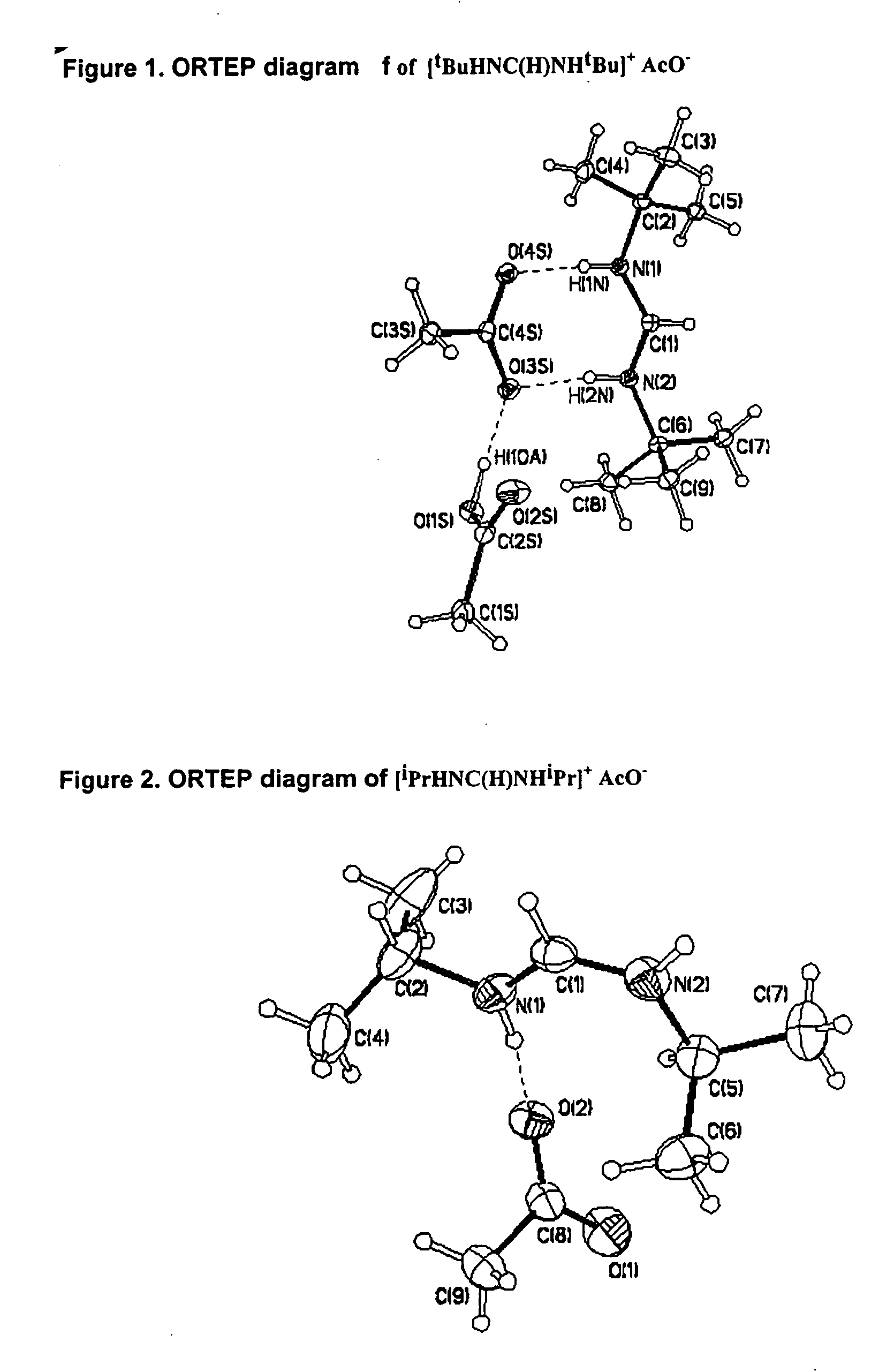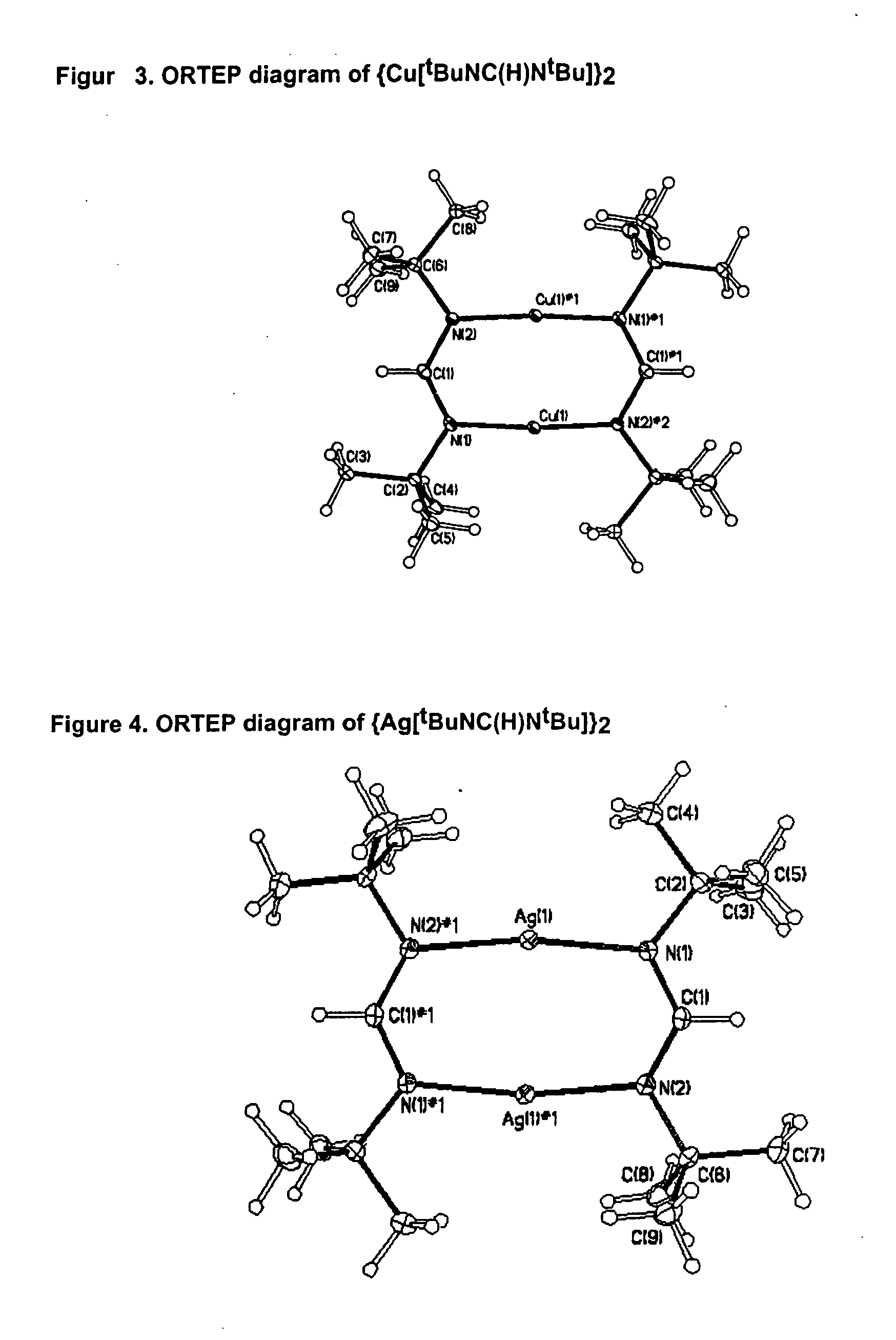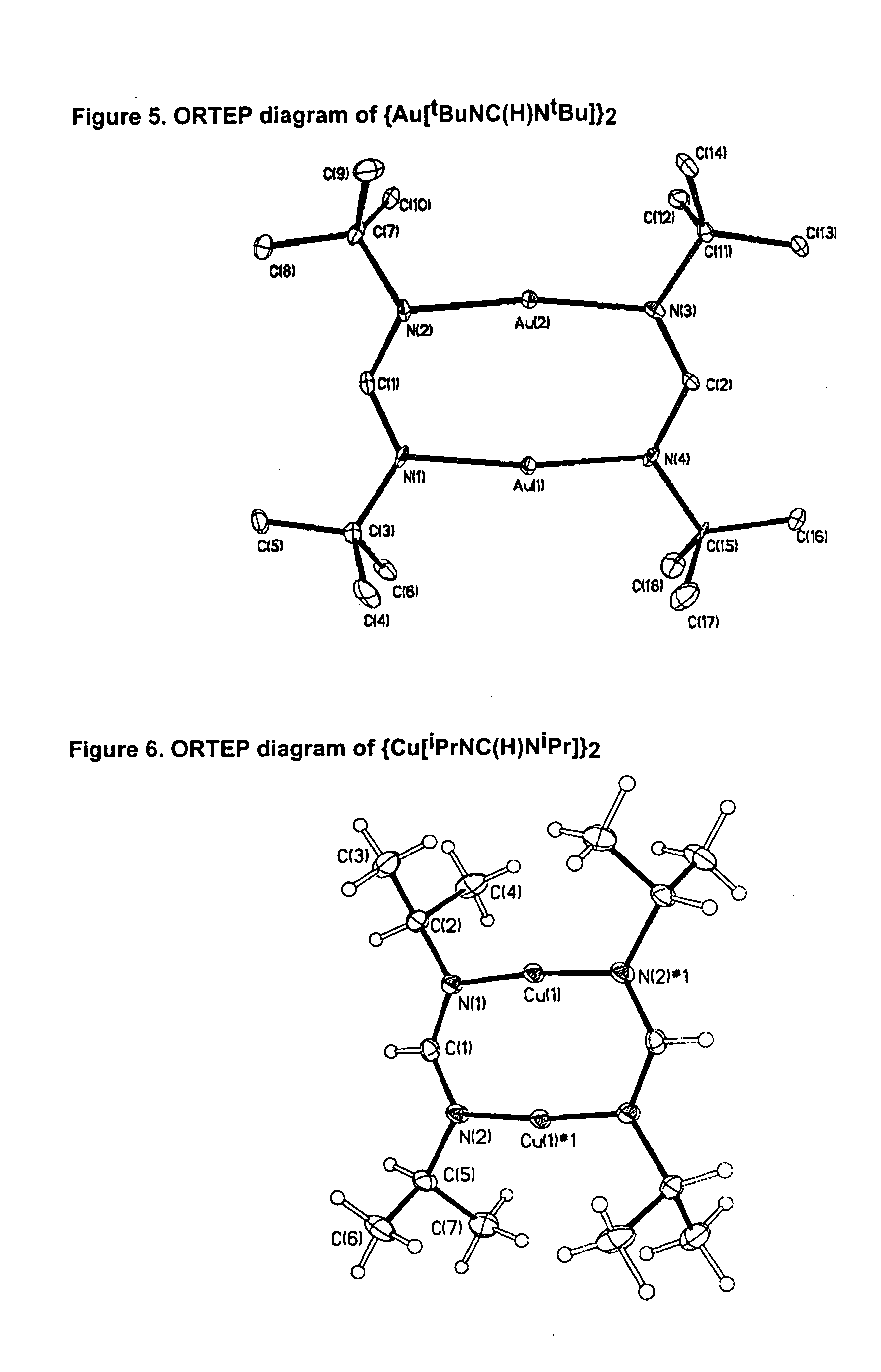Class of volatile compounds for the deposition of thin films of metals and metal compounds
a technology of volatile compounds and thin films, applied in the direction of gold organic compounds, organic chemistry, coatings, etc., can solve the problems of limiting the dissipation of resistively generated heat, the problem of oxygen in the ligand, and the ohmic resistivity of the heat generated
- Summary
- Abstract
- Description
- Claims
- Application Information
AI Technical Summary
Problems solved by technology
Method used
Image
Examples
example 1
Synthesis of N,N′-di-tert-butylformamidinium acetate salt
Glacial acetic acid (80.0 mL, 1 equiv. 83.9 g, 1.40 mol) and triethylorthoformate (232 mL, 1 equiv. 207 g, 1.40 mol) were boiled under reflux in a 2 L two-necked round bottom flask equipped with reflux condenser, dropping funnel and magnetic stirrer. After heating the mixture to reflux under an atmosphere of argon, tert-butylamine (289 mL, 2 equiv, 2.80 mol) was added dropwise (slow stream of argon) over a period of two hours. The mixture was boiled for 24 h and the unreacted acetic acid removed by distillation. The residue was purified by a solid distillation (84° C. / 0.1 torr) to give 248 g (82%) of pure N,N′-di-tert-butylformamidinium acetate. m.p. 60-62° C. The above equation 1 illustrates this reaction.
example 2
Synthesis of N,N′-di-iso-propylformamidinium acetate salt
Glacial acetic acid (22.5 mL, 1 equiv.) and triethylorthoformate (59.46 g, 1 equiv.) were introduced into a 250 mL schlenk flask equipped with reflux condenser, dropping funnel and magnetic stirrer. After heating the mixture to reflux under an atmosphere of argon, iso-propylamine (67 mL, 2 equiv.) was added dropwise using the dropping funnel while a slow stream of argon was passed through the condenser. The crude mixture was boiled under reflux for 3.5 d. After removal of the ethanol by distillation, an orange residue was left solidifying partially at room temperature. The formamidinium acetate was isolated by slow sublimation at 40° C. / 0.1 torr (30% yield), M.p. 83-85° C. The above equation illustrates this reaction.
example 3
Synthesis of Bis[(N,N′-di-tert-butyl-formamidinato)copper(I)]
N,N′-di-tert-butyl-formamidinium acetate (7.30 g, 1 equiv.) was introduced into a schlenk flask equipped with a reflux condenser and a cold water bath. n-BuLi (1.6 M solution in hexanes, 42.2 mL, 2 equiv.) was added dropwise and under stirring and the solution boiled for 1 h under reflux. CuCl (3.35 g, 1 equiv.) was added to the cold (r.t.) reaction mixture. After 60 h of stirring at r.t., the solvent was evaporated in vacuo and the remaining solid sublimed at 90° C. / 0.1 torr. Yield 4.56 g (62%) of colorless crystals. M.p. 230° C. The above equation illustrates this synthesis.
PUM
| Property | Measurement | Unit |
|---|---|---|
| temperatures | aaaaa | aaaaa |
| temperatures | aaaaa | aaaaa |
| ohmic resistivity | aaaaa | aaaaa |
Abstract
Description
Claims
Application Information
 Login to View More
Login to View More - R&D
- Intellectual Property
- Life Sciences
- Materials
- Tech Scout
- Unparalleled Data Quality
- Higher Quality Content
- 60% Fewer Hallucinations
Browse by: Latest US Patents, China's latest patents, Technical Efficacy Thesaurus, Application Domain, Technology Topic, Popular Technical Reports.
© 2025 PatSnap. All rights reserved.Legal|Privacy policy|Modern Slavery Act Transparency Statement|Sitemap|About US| Contact US: help@patsnap.com



